“The Big Fork and Little Fork rivers flow north to our border with Canada in superb wilderness. Notable for their free-flowing aspect, they include long pools, waterfalls, and swift rapids-and some great remote stretches...The Big Fork and Little Fork are outstanding for canoe travel...Both streams traverse the north woods in unspoiled beauty.”
We were in the midst of Big Fork River’s Bridge Rapids when I heard the canoe "clunk" as it forcefully met a rock behind us. I called to my bow paddler, EK, to grab the eddy up ahead on the right. We angled the nose of our canoe toward the calm water just behind the upcoming rock, and EK reached out to plant a hanging draw stroke in the eddy. We leaned into the turn and with a pry in the stern and the force of the current, we kicked our canoe tail around, completing the eddy turn, and parked squarely in the calm and protected waters behind the large protruding rock facing upstream.
We’d spun around just in time to see one of the other canoes in our group broached sideways on a rock, filling with water, and the bow paddler, Mari floating past us in the rapids, along with a pack of chicken that was supposed to be that night’s dinner. I let out three whistle blasts to send a heads-up to our lead canoe downstream to help fish Mari out. The sternsman, Griffin, of the broached canoe was on a rock and had control of the canoe. I saw Mari safely pulled up on shore ahead, so I waded up to the partially-submerged canoe to help bring it to shore and dump out.
With three canoeists now and two canoes, EK and Griffin set off downstream in one canoe, and I rearranged packs to make a solo spot for myself midship in the rescued canoe. I pulled out the setting pole and cautiously snubbed down through the rest of the Bridge Rapids to rejoin our crew.
The Big Fork River float had been smooth going until now. The flip in these rapids added some excitement. Things were really getting fun (of course, that was easy for me to think since I wasn’t the one swimming…)!
Prepping for Big Fork River
Minnesota's Big Fork River flows north, running into the Rainy River, and eventually Hudson Bay. The Big Fork is a 180-mile long state-designated canoe route, with numerous no-cost, paddle-in, on-river campsites. I’d watched an excellent old film about Bill Hafeman, a birchbark canoe builder who lived on the Big Fork's banks, and I knew Calvin Rutstrum, one of my favorite old time outdoor writers, had spent considerable time in the Big Fork region, so I had wanted to put together a crew to paddle the Big Fork for some time.
The section of river I'd mapped out for us was from the town of Big Fork to where the river meets Cty Hwy 6, which runs about 45 miles. From what information I had, relying primarily on Lynn Smith Diebel's excellent book, Paddling Northern Minnesota, this section had some of the best whitewater stretches and on-river campsites. It was also the right length for our timeframe and would allow us to leave vehicles both at Little American Falls, and the Hwy 6 takeout, providing some flexibility on extraction points on the backend.
Since our paddlers were arriving from International Falls, Minneapolis-St. Paul area, and Madison, WI, I had our crew meet at Scenic State Park near the town of Big Fork, Minnesota. Scenic State Park had a very nice group campground and worked well as a meeting spot. We had plenty of room to organize our gear, and we camped on the shore of Lake of the Isles, which was perfect for a pleasant evening paddle.
The next morning had us packing canoes in the stifling heat at the landing (a large landing with a park shelter and handy convenience and hardware stores within walking distance) in the town of Big Fork. We'd woken up and immediately broken camp at Scenic State Park and drove the seven miles into town to work on loading, have our pre-trip safety talk, and run our shuttle vehicles to the takeout points, which took less than an hour.
Bears and Bugs
“The Big Fork River would still be familiar to the Indians and fur traders if they were to canoe it today. A trip down the Big Fork is like a journey into the past. It is still possible to see most of the same species of wildlife that lived in the forest 200 years ago. The caribou are gone, but timberwolves, lynx, moose and bear wander the woods, while bald eagles and ospreys soar overhead. Walleyes, northerns, smallmouth bass and muskies inhabit the river.”
Once underway and floating along the Big Fork's waters, we had a chance to relax and start melting into the northwoods environment.
The wildlife we saw over the course of the weekend was definitely a highlight! Less than an hour into our paddle, we came around a bend in the river, and I saw a bear's face staring straight at me from the wooded banks! For a split second, she almost looked fake, like a lawn ornament, but with a "WOOF" and a hasty scurry back into the woods, mama bear quickly dispelled that thought. We heard mama bear bark at her cubs and the cubs’ bleats as she stood up on her hind legs to keep eyes on us as we floated along the river.
Two days later, and many miles downriver, the sound of scraping claws on bark caught our attention, and when we turned to find the source, we saw two black bear cubs racing up a tree.
Deer on the river bank acted as if they'd never seen a human and sat watching peacefully as we floated past them, just a few feet away. I lost count of how many bald eagles we saw swooping down and soaring above us from their nests over the narrow river. At one point, a fat beaver raced through the woods along the bank and then launched himself off the river bank and into the river like an Olympic swimmer.
Other wildlife interactions were less pleasant. The Big Fork's reputation as a notoriously buggy river is well earned. Although the mosquitos weren't bad during the day on the river, they came out in droves at night. Ticks were abundant (I even had to have help extracting one from my chest). A leech found Griff’s ankle while we swam below Little American Falls, and then had everyone frantically checking themselves. I packed a 12'x12' Nemo Bugout tarp with mosquito net sidewalls. I’d used one of Cooke Custom Sewing's bug tarps on a previous Canadian canoe trip, so I knew how welcome these types of shelters can be! The Nemo worked and offered a safe haven for our group dinner and hanging out at night without being eaten alive by mosquitos. Kurt also got out his Thermacell, which seemed to help around the campsite.
[NOTE: I've found that a well pitched tarp can often save a trip, whether it’s rain or sun that I’m shielding, and I've worked to become proficient in my tarpsmanship. The new-to-me Nemo Bugout has some type of cantenary cut to the ridgeline, and it didn't want to pitch tautly when pulled out with prusik loops on a ridgeline. I think I just need to practice with different pitching techniques, and I’m hopeful it works better for me next time, but as it was pitched on this trip, although it kept bugs out, it would've been a failure in a heavy rain.]
“The Big Fork is a wonderful camping river with lots of wilderness stretches, well-spaced DNR campsites, good muskie fishing, plenty of wildlife.”
Wild Landscape
There’s very little development along the Big Fork’s 45 miles that we paddled. We passed several cabins and floated under a few bridges, and we only saw one other paddler throughout our trip.
The banks of this old logging river were heavily forested, and in one of the more unusual fashions that I'd ever seen. I'd estimate that, depending on the stretch of the river, the surrounding forest was about half coniferous and half deciduous trees. The odd part was that the two tree types were often completely separated with one riverbank covered in spruce, fir, and pine, and the opposite riverbank covered in cottonwood and ash. All beautiful trees, but it threw me off—sort of like eating pizza at a Chinese restaurant. While I appreciate broadleaf forest, I think part of the issue was that I'd expected a pure coniferous forest this far north, like much of the Superior National Forest to the east. The river banks were grassy and somewhat muddy, unlike the rocky granite Canadian Shield banks found to the east in Minnesota's Arrowhead country.
Wenonah Canoes on the Big Fork River
We had the luxury of paddling new Wenonah canoes on this trip, thanks to our friends with the company. Both the 16’ Prospectors and the 17’ Spirt II carried us nicely along the Big Fork River. I’ve paddled both models on many trips, in lake country and on winding, rocky, and rapids-filled rivers, such as the Big Fork. Both are great canoes.
The Prospector is shorter and has a more upturned “rocker” on the ends, so it has the advantage in tight turns and bends, as well as with whitewater maneuvers. Even though it’s a classic tandem, the 16’ Prospector is my #1 choice to paddle solo, for my attempts at “Canadian Style” paddling, and it’s perfect for use with the setting pole.
A foot longer than the Prospector, the Spirit II can haul more, is roomier (the bow of the Prospector doesn’t have a lot of leg room for a tall guy like myself), is a bit faster on the straightaways, and offers better tracking. Wenonah bills the Spirit II as their “do it all” canoe, and having paddled it through the rapids of the Cloquet River, as well as paddling and portaging through Algonquin Provincial Park’s wilderness lake country, I’d say that’s true. For this trip, we paddled T-Formex versions of both canoes. T-Formex has proven to be a great hull material. It’s tough, and it seems it can be formed into finer hull designs, and is stiffer than its predecessor, Royalex.
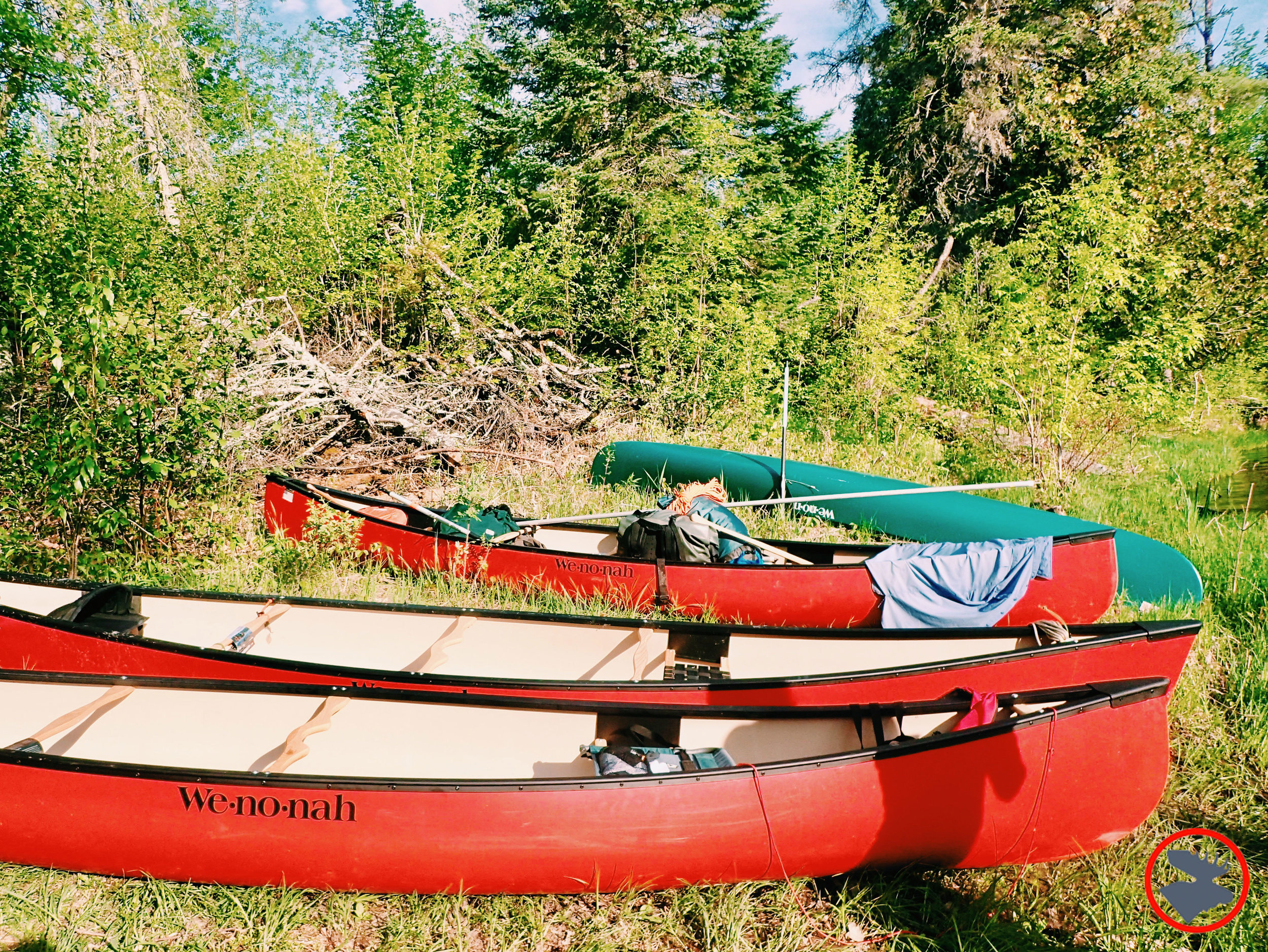
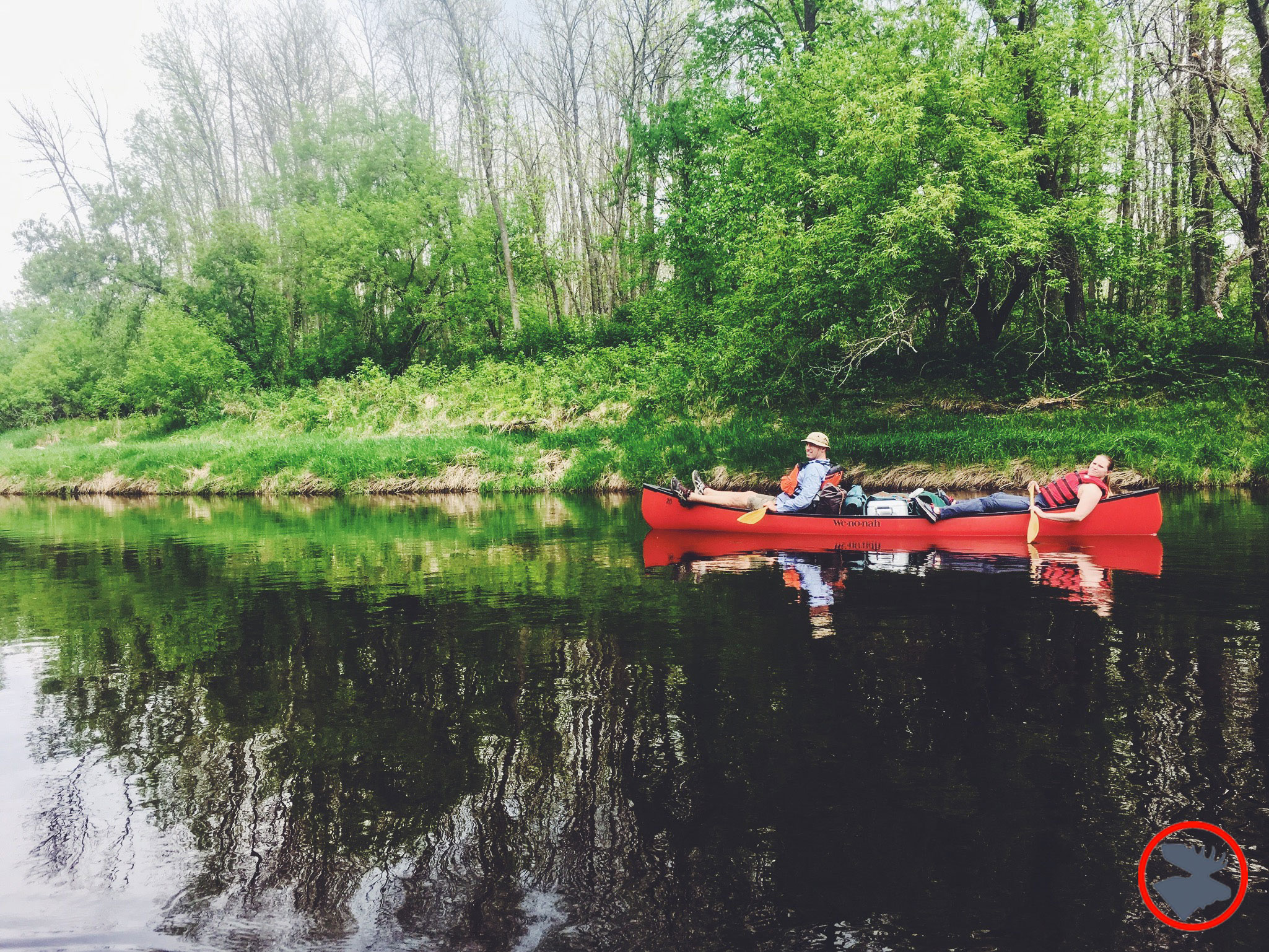
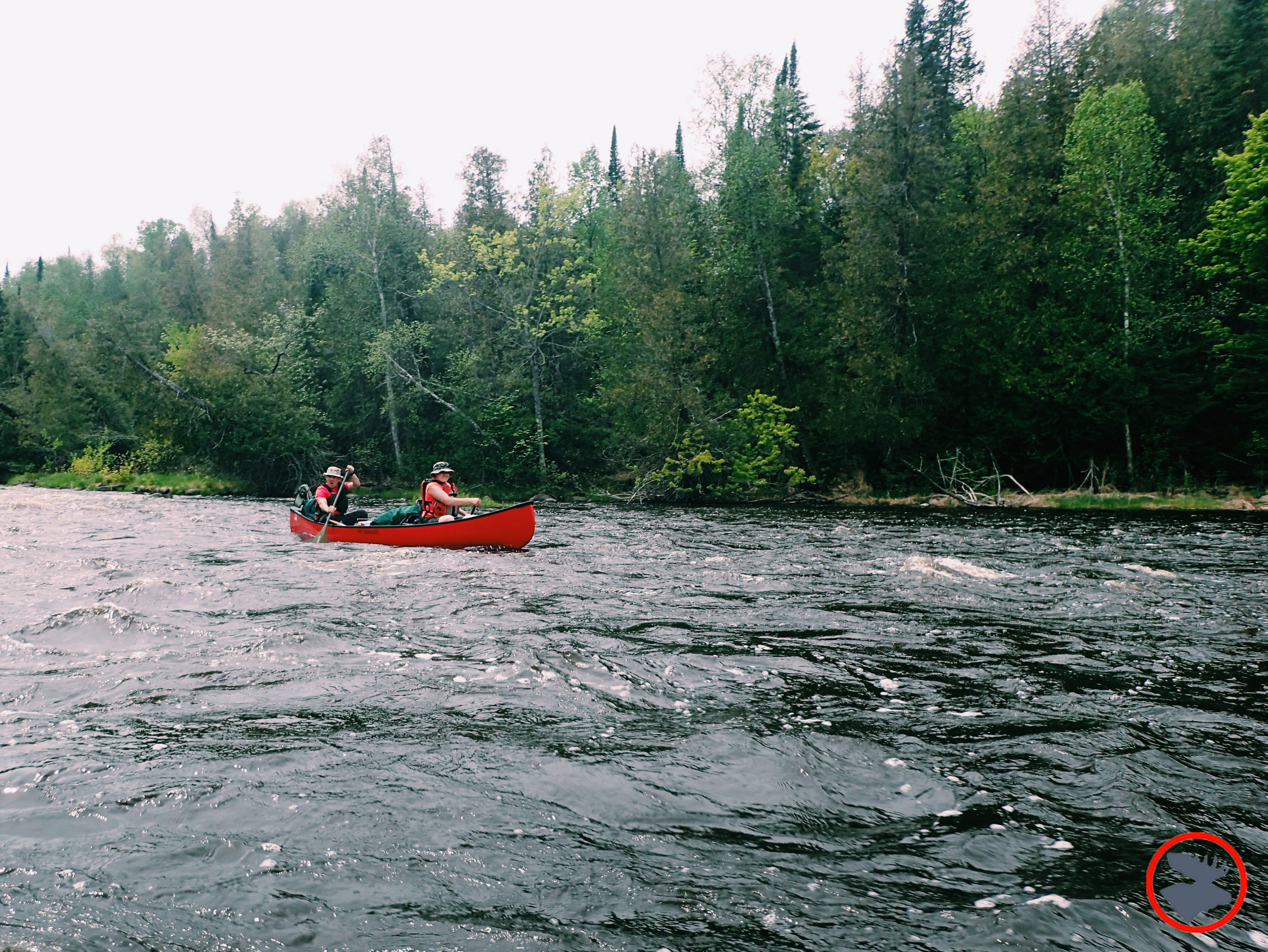
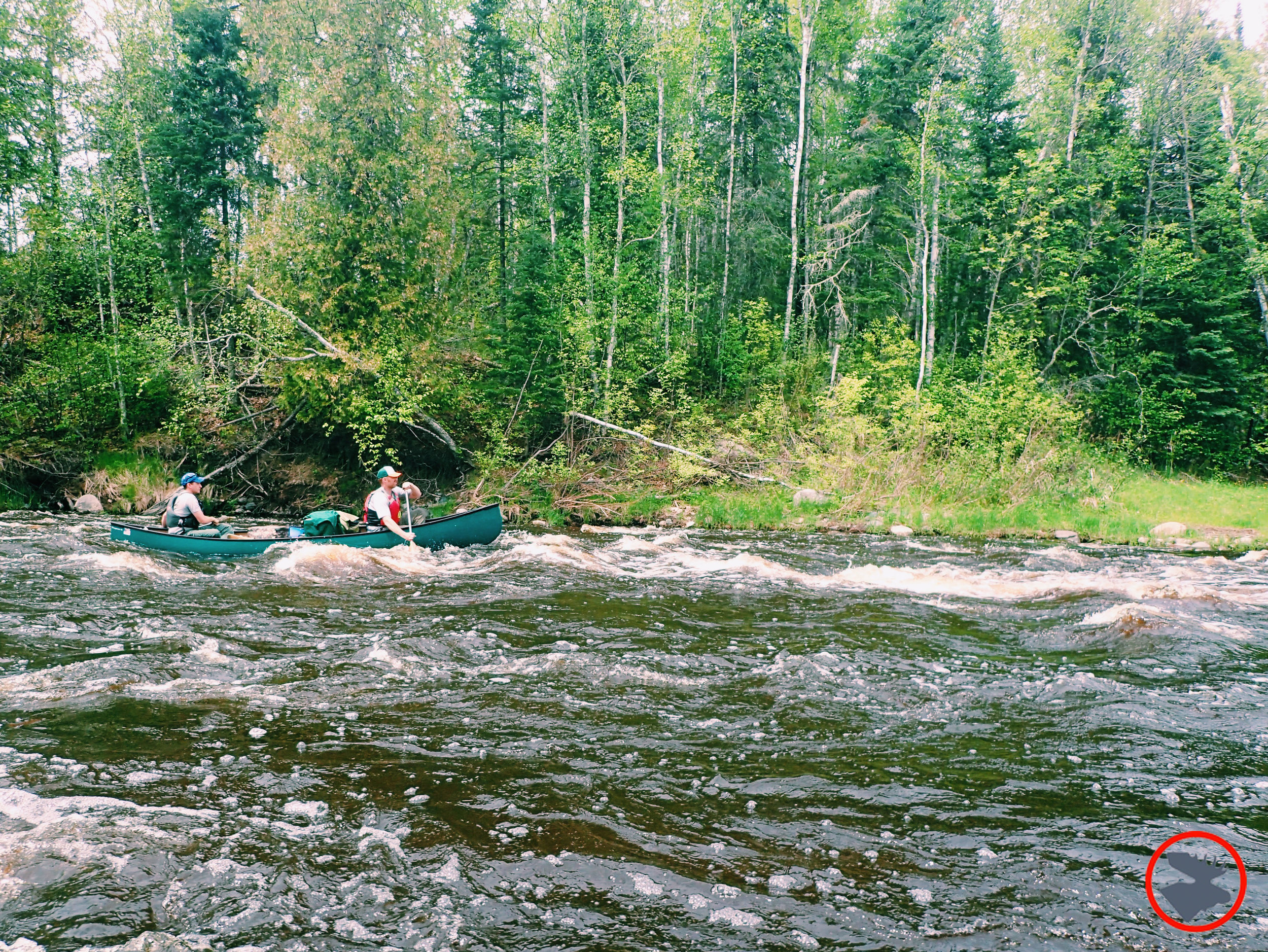
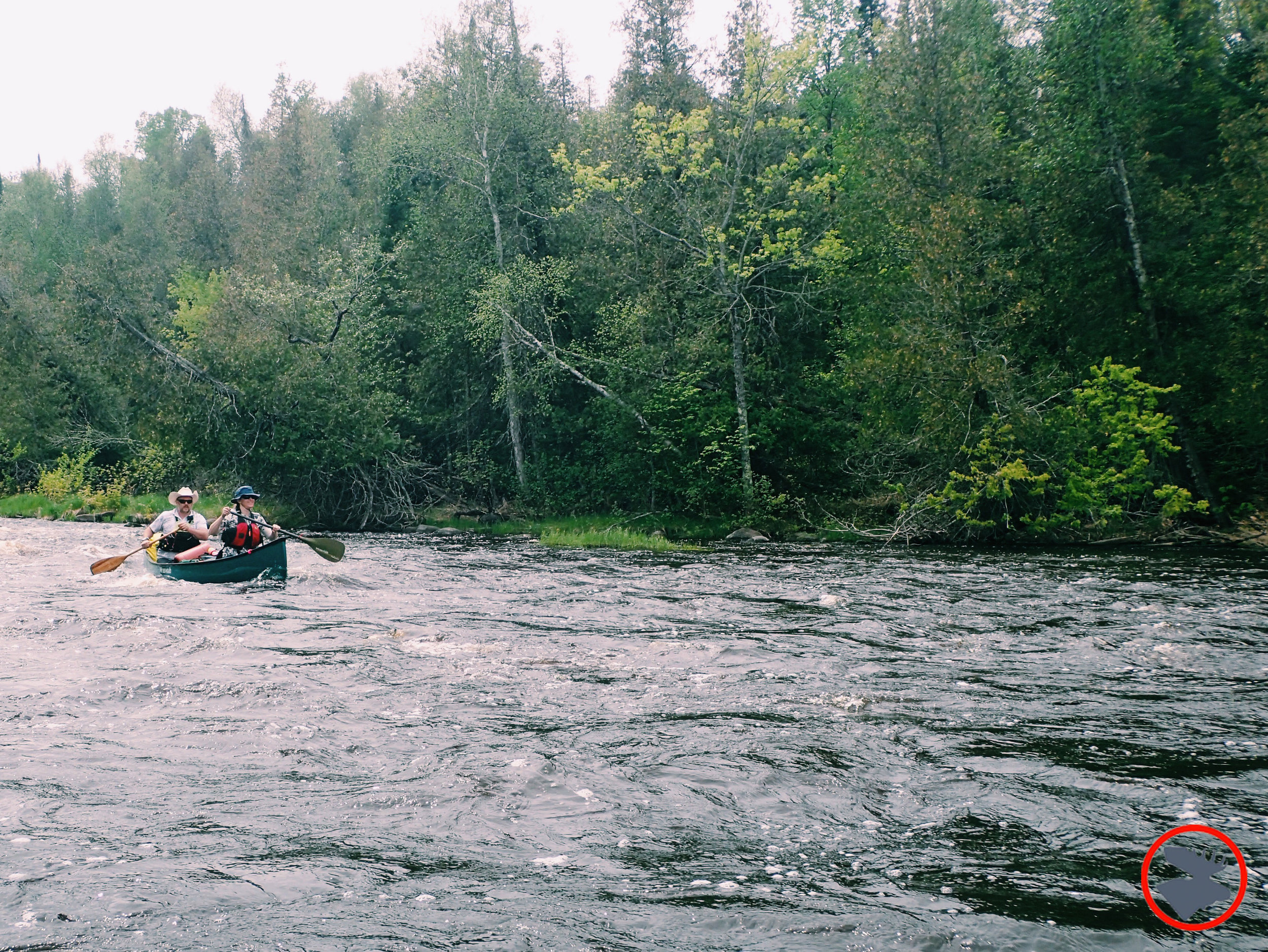
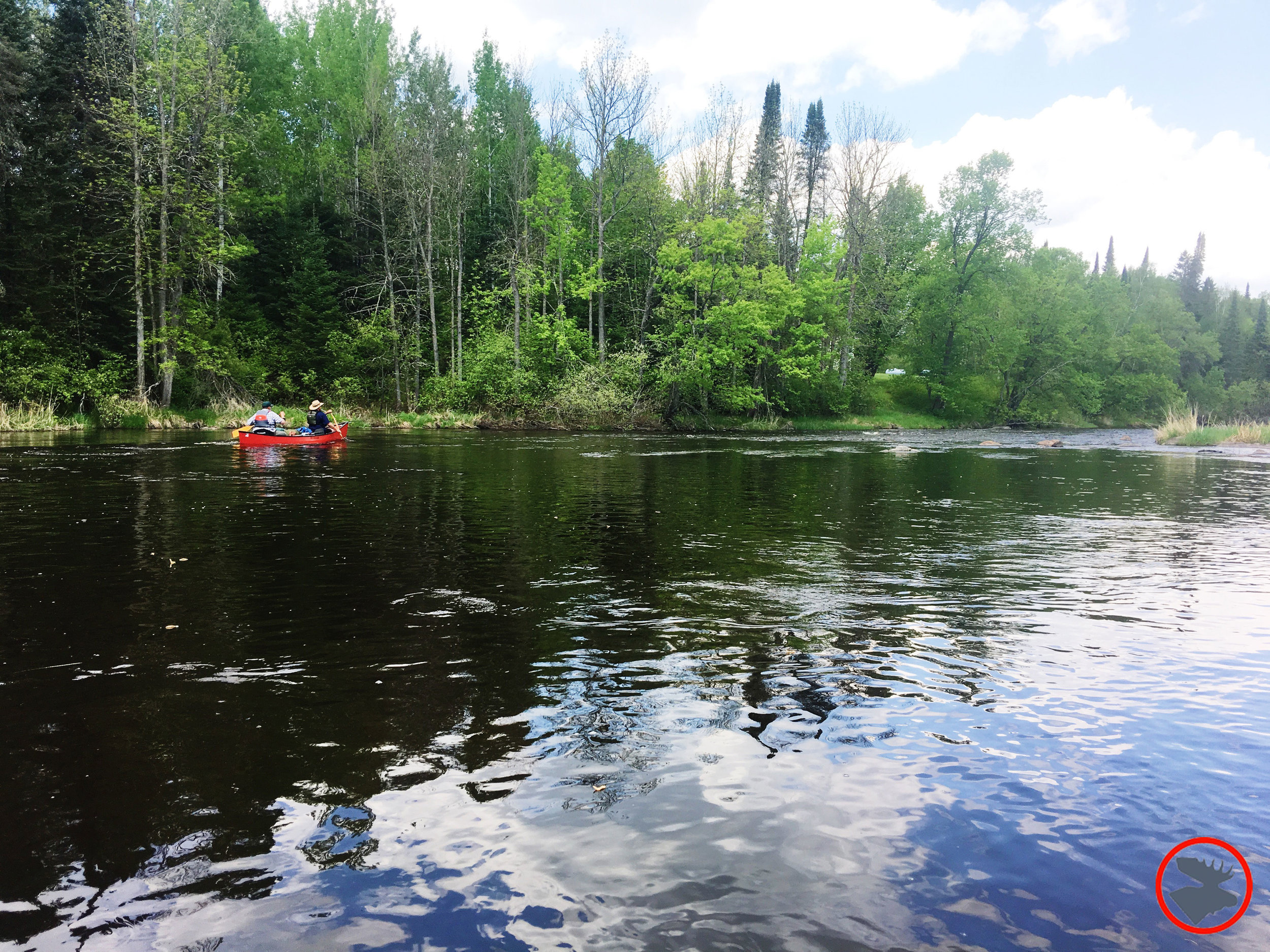
Paddling & Eating Well
It wasn’t just paddlers and a canoe rescued in the wipeout at Bridge Rapids—our chicken dinner was also saved! I had two packages of chicken thawing for dinner under a pack flap, and our aggressive eddy turn caused them to shoot off into the river. Luckily, quick hands effected a successful river rescue, and the poultry ended up being grilled and stuffed in pitas as part of Mike's backwoods gyros, which were phenomenal! Kurt and Katja had treated us with their basecamp dutch oven enchiladas, and Mike followed suit, keeping us fat and happy with his grub-box magic: grilled chicken gyros, a delicious barbecued Korean pork, and traditional heavy-duty woodsman breakfast of bacon and pancakes, along with fresh hot biscuits baked in reflector ovens and sausage gravy. There’s nothing like canoeing and camping in the wild, but eating better than at a restaurant in the city! I can’t thank Kurt, Katja, and Mike enough for the meals they prepared on this trip!
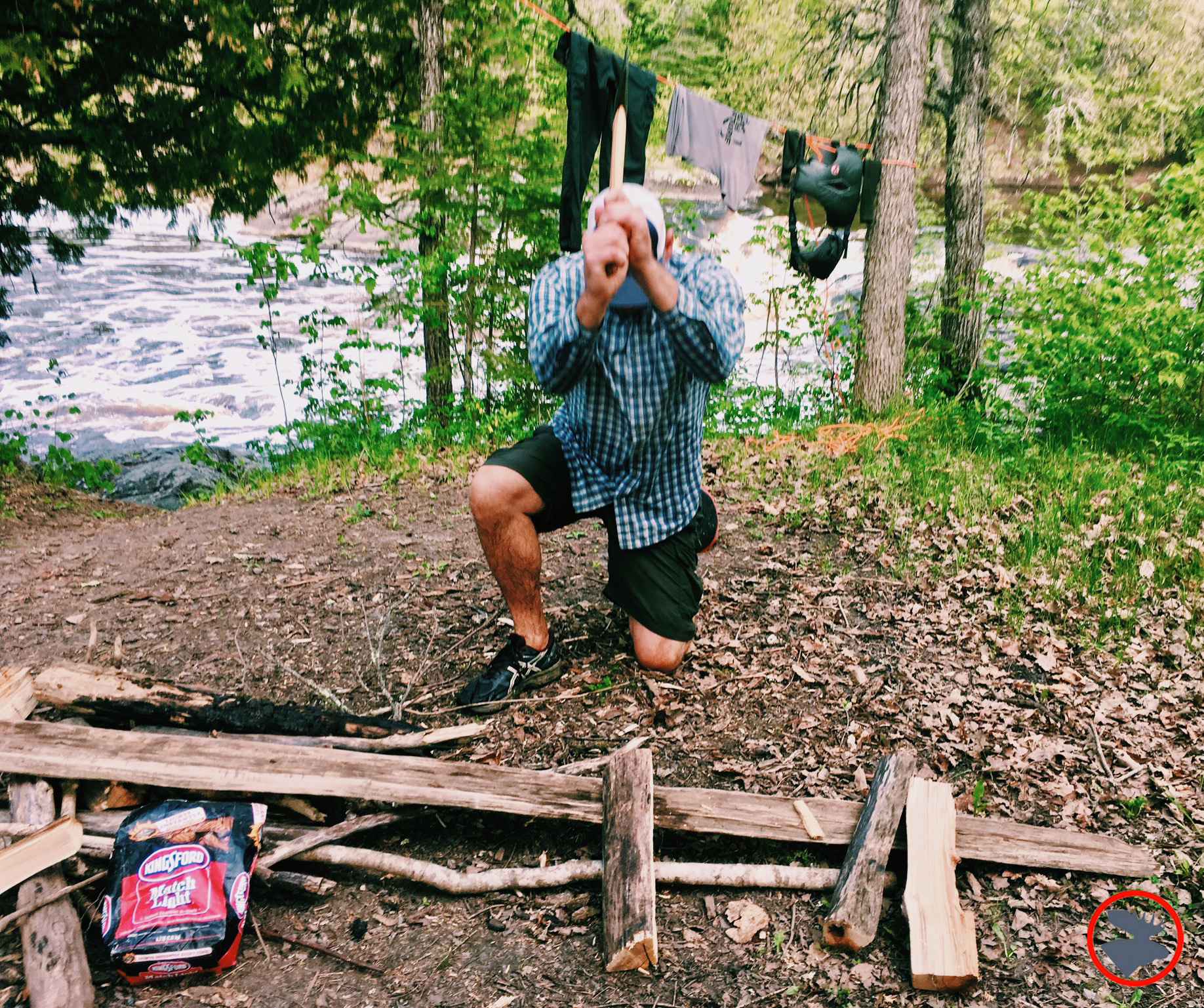
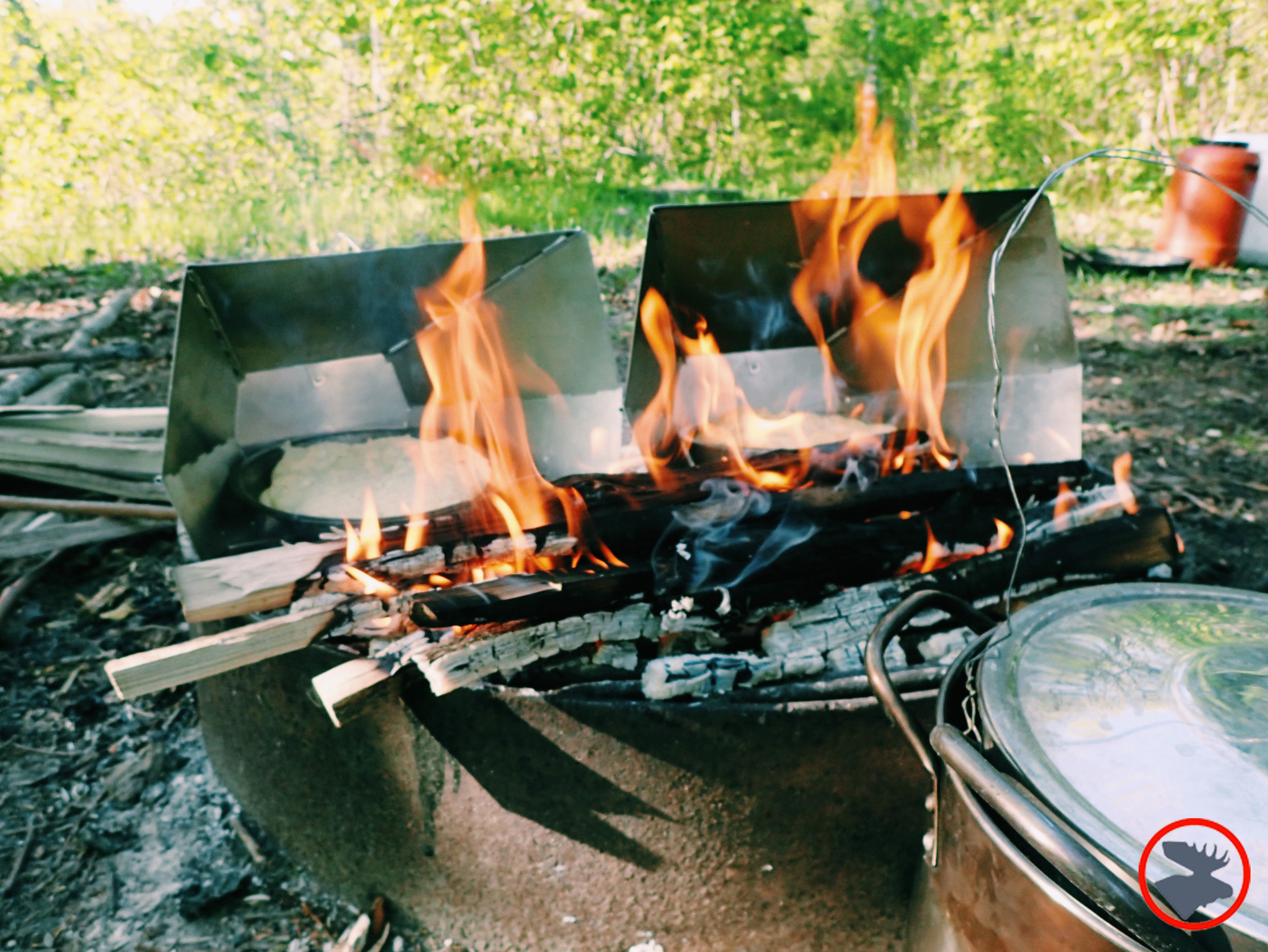
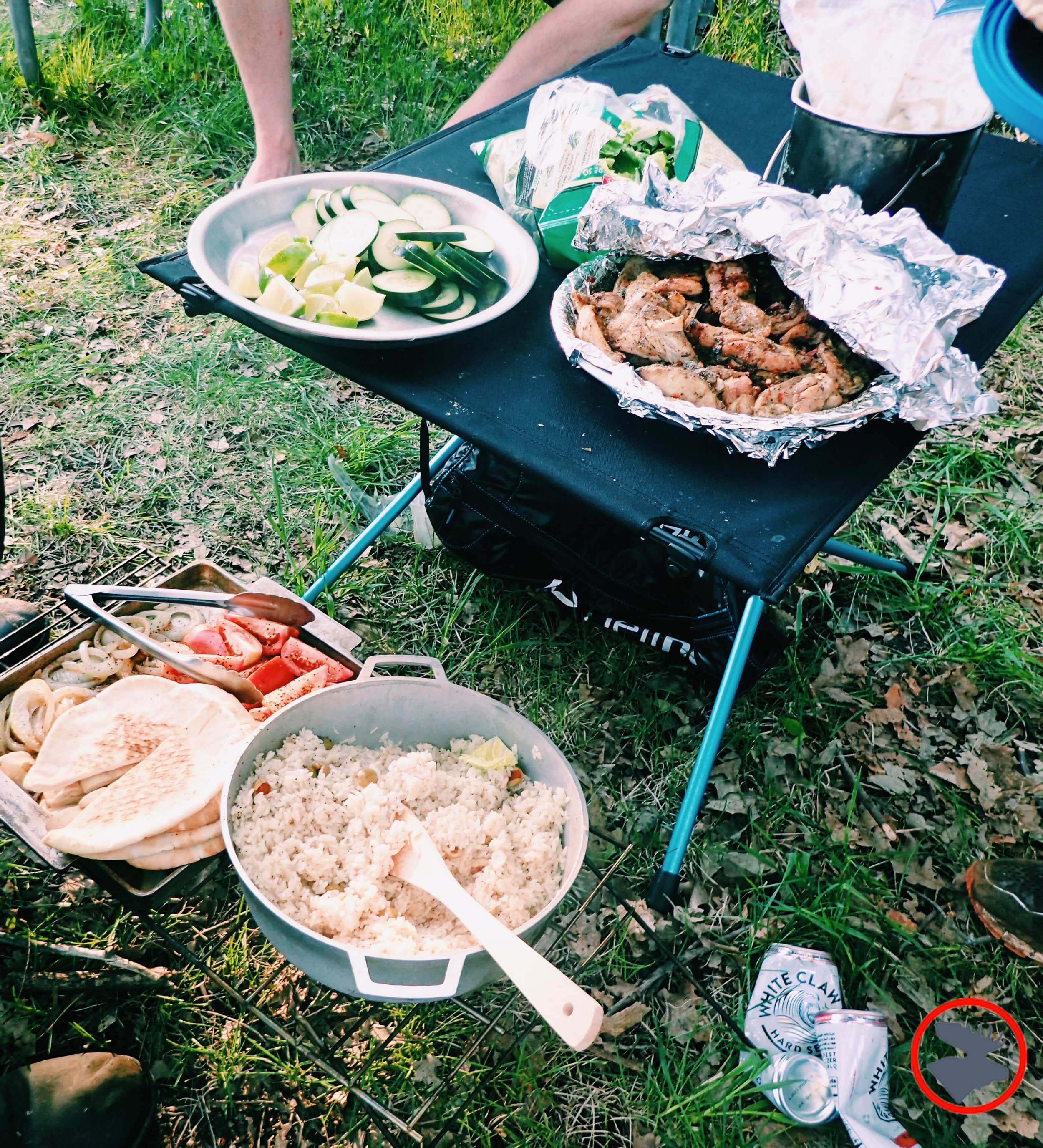
Plan to Paddle the Big Fork River
We had a great long weekend canoe camping on the Big Fork! Rapids, wilderness, wildlife, and solitude aplenty were enjoyed on this little-travelled river. So, how do I rate the Big Fork?
I think the Big Fork is a very good regional opportunity for a multi-day on-river camping experience. The Big Fork isn’t as scenic as the Boundary Waters Canoe Area Wilderness, and with a few cabins and road crossings, it doesn’t offer quite the same feeling of wilderness immersion; however, it does have portage-free (and permit- and fee-free) river paddling and the excitement of some nice whitewater segments. Important safety note: You should have at least intermediate river paddling skills or be traveling with an expert to paddle these sections (and always wear a pfd!).
Another of our favorites, the Namekagon-St. Croix National Scenic Riverway, is a 200-mile river system that offers a closer comparison to the Big Fork River. I think the Namekagon-St. Croix is a bit more scenic than the Big Fork, but both rivers offer many views over their long runs. The Namekagon-St. Croix is going to be closer to most of the metro areas in the upper Midwest, but the trek way up north to the Big Fork will more likely find you sharing the riverbanks with bears, moose, and wolves, as well as alone on the river, rather than waving to the other paddlers who love the wonderful Namekagon-St. Croix.
If the Big Fork River wasn’t overshadowed by the multitude of other incredible paddling opportunities in northern Minnesota, I think people would regularly travel from afar to float the Big Fork. I’ll be back, but probably not before exploring some of the other great paddle ways the northwoods has to offer.
If you’d like to join Bull Moose Patrol on a wilderness trip or an outdoor skills course, or if you’d like to have us speak to your organization, feel free to get in touch at Bullmoosepatrol@gmail.com!



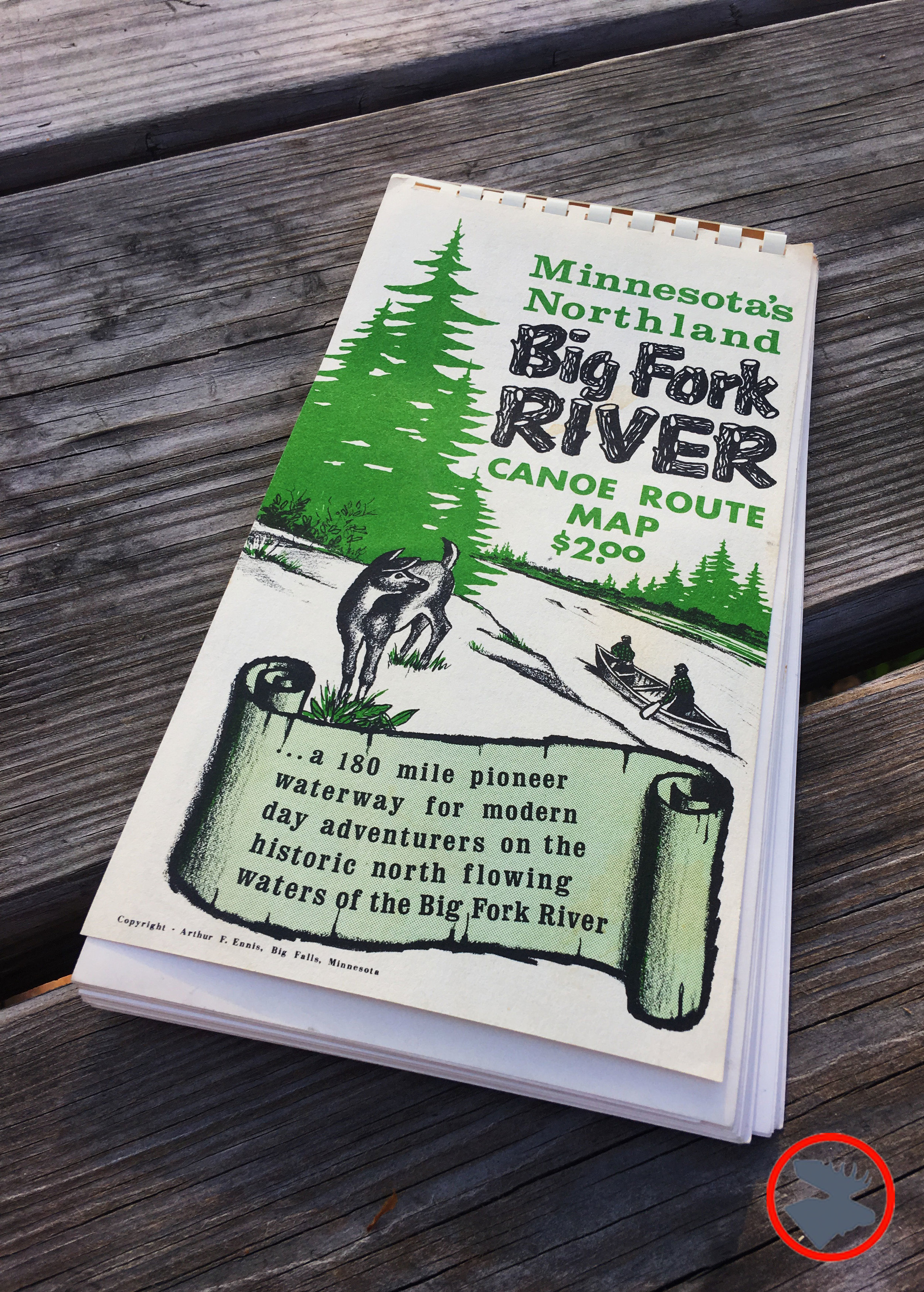
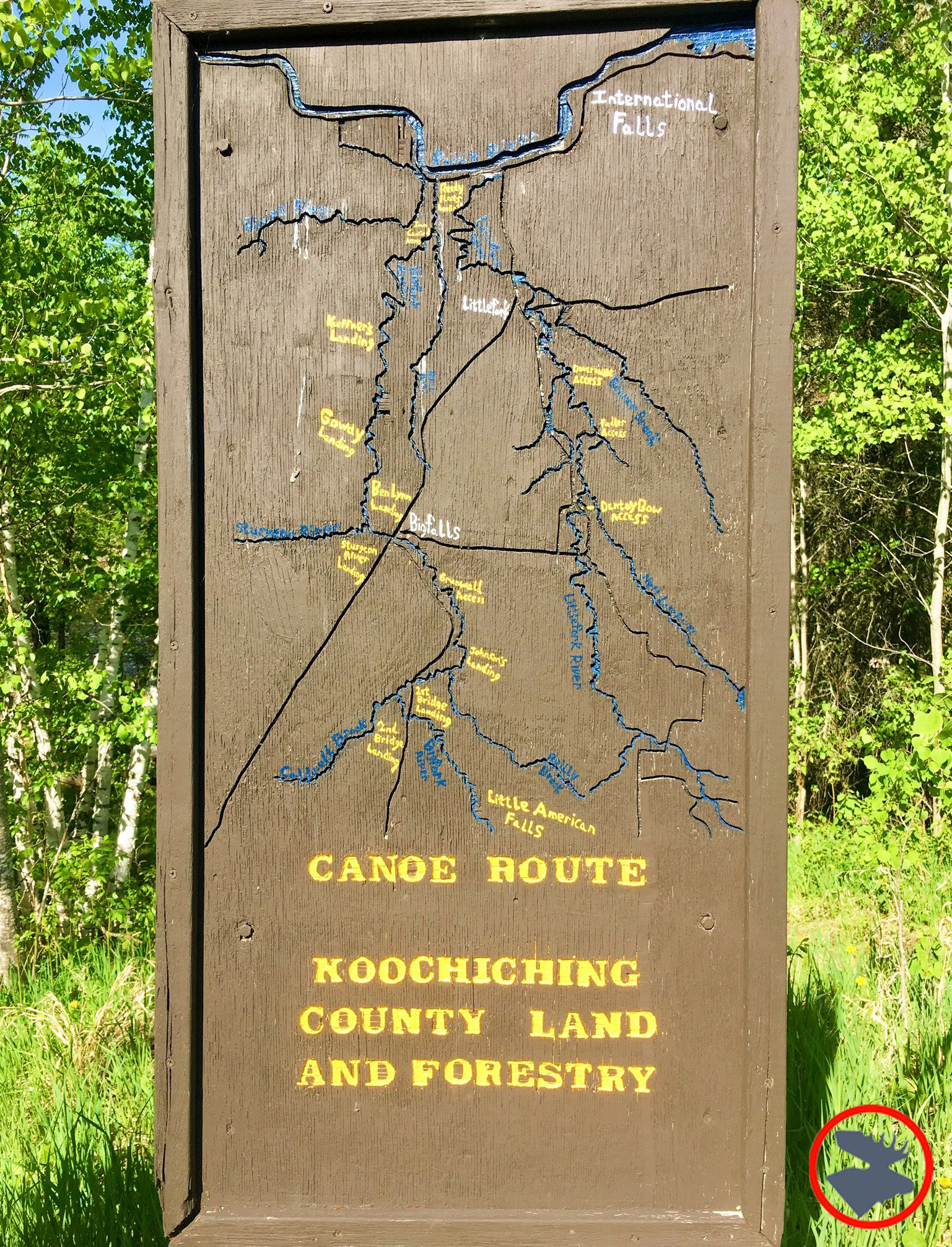





The Cannon River is a nice scenic paddle not too far from the Twin Cities—but far enough to get you well into the country—and if you time it right, the Cannon offers a peaceful, beautiful, and rewarding taste of the Driftless Area. Learn more about the Cannon and start planning your next trip!